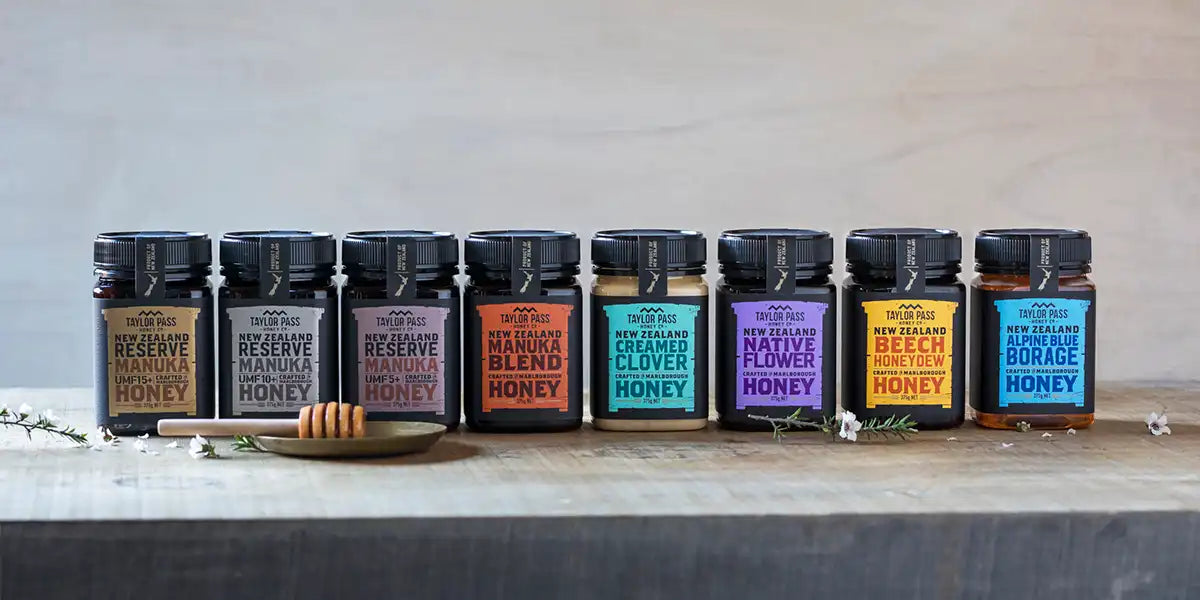Cooking vs. Wellness: Maximizing Your Mānuka Honey
You already love the sweet taste of Mānuka honey on your toast and in your tea, but you might be wondering: can you actually cook with Mānuka honey without destroying its renowned therapeutic benefits? Good news! With the right approach, you can harness both the culinary versatility and health-promoting properties of this unique New Zealand nectar.
Understanding UMF Ratings
The UMF™ (Unique Mānuka Factor) rating on your Taylor Pass Honey jar directly measures potency and health benefits through the concentration of its key compounds. Higher numbers indicate higher antibacterial and anti-inflammatory properties and greater wellness benefits.
For your cooking and wellness needs, here is a simple guide:
• UMF 5+: For those looking for a natural sweetener that supports a healthy lifestyle.
• UMF 10+: Excellent for culinary applications and everyday health and wellness support, maintaining digestive health, soothing sore throats, and supporting overall immune system function.
• UMF 15+: Superior strength for more potent antibacterial properties, wellness support, and specific therapeutic uses, also excellent for drizzling over special dishes.
When selecting Mānuka honey for your kitchen, consider how you'll use it. For cooking methods that require heat, a lower UMF rating offers excellent flavor at a better value. Save your higher UMF honey for applications where temperature won't compromise its healing properties.
The Temperature Secret
The key to preserving Mānuka honey's therapeutic qualities is understanding its relationship with heat. Research shows that the compounds responsible for many of Mānuka's healing properties begin to degrade when heated above 150°F (65°C).
When subjected to typical baking temperatures (325-350°F,) Mānuka honey’s special antibacterial properties can decrease. While still delicious and safe when heated, high temperatures can significantly diminish the unique qualities you invested in.
Smart Cooking Strategies for Mānuka Honey
Rather than avoiding cooking altogether, follow these temperature-conscious methods to maintain both flavor and function:
Cold Applications:
• Drizzle over finished dishes as a flavor-enhancing finishing touch
• Blend into cold dressings and marinades with olive oil, citrus, and herbs
• Mix into smoothies, yogurt parfaits, or overnight oats
• Use as a natural sweetener in cold-pressed beverages
Low-Heat Applications:
• Wait until your tea or coffee has cooled to warm (not hot) before adding
• Incorporate into sauces and glazes after removing from heat
• Add to oatmeal or porridge after cooking, when it's cool enough to eat
To make a delicious Mānuka Honey and Herb Salad Dressing, check out the recipe here.

Making Smart Choices
When selecting the rich taste of Mānuka honey for your kitchen, consider how you'll use it. For cooking methods that require heat, multifloral honey or Mānuka honey with a lower UMF™ rating offer excellent flavor at a better value. Save your higher UMF™ honey for applications where the temperature won't compromise its special properties. All Taylor Pass Mānuka honey monofloral varieties feature UMF™ certification, guaranteeing they haven't been overheated during processing and contain the authentic compounds in precisely the concentrations stated on the label.
With these simple strategies, you'll enjoy the full spectrum of benefits from your Mānuka honey, both for wellness support and in your culinary creations.
Tip: Always let hot foods and beverages cool for a few moments before adding your Mānuka honey for maximum wellness benefits without sacrificing flavor.


